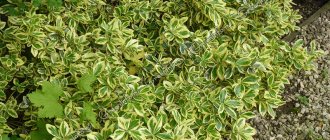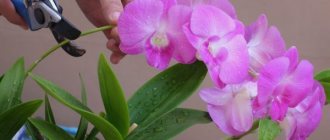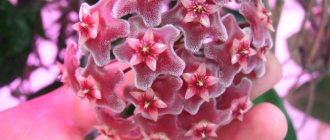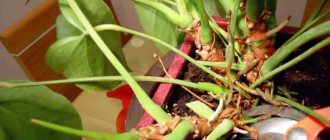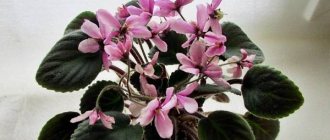Description of Fortune's euonymus
Fortune's euonymus in Latin, Euonymus fortunei (alluring with beauty), became the basis for breeding work to develop new plant varieties. They are widely used in the design of sites, recreation areas, city squares and parks. The low-growing shrub attracted the attention of botanists due to the exotic color of its leaves, the decorative nature of the bush and its ability to preserve the crown throughout the winter.
A distinctive feature of Fortune is the unusual color of the foliage, which depends on the plant variety and time of year. There are evergreen species without changing color in autumn. Others change color dramatically. The common shade of the crown is emerald with yellow splashes on the leaves or dark green with silver fragments. The leaves, elongated up to 5 cm in length, are closely spaced along the stem; visually the shrub has a lush shape, without gaps.
Is Fortune's euonymus a poisonous plant or not?
By autumn, the plant produces fruits with a high concentration of toxic substances. Poisonous berries are not eaten. Selected varieties of shrubs rarely bear fruit. Fortune blooms profusely in the wild with inconspicuous greenish flowers. The formation of inflorescences on a creeping plant is found in regions with warm climates. Therefore, euonymus can only be considered half poisonous. The sap of the plant is non-toxic, it practically does not bloom, there are no inflorescences or fruits. In general, Fortune's euonymus (Euonymus fortunei) is safe.
Height of Fortune's euonymus
In southern latitudes, Fortune's euonymus of a selected species grows up to 60 cm, in the natural environment - 30 cm. Side shoots can reach up to 3 m, regardless of the type of shrub. Nodular formations form along the stem, they become the basis for root growth. If you place a support near the Fortune euonymus and direct the growth of side shoots, the plant will rush upward. This technique creates all kinds of shapes on the site.
Winter hardiness of euonymus Fortune
On the territory of the Russian Federation, the range of the species is the Far East, the European part of Russia, Southern latitudes. Thanks to the ability:
- withstand temperatures down to -25 °C;
- ease of care;
- tolerate drought without constant watering.
Fortune's euonymus is capable of growing throughout almost all of Russia, except for regions with risky farming. The plant is in demand among professional designers; the shrub is not popular among gardeners; it is treated as an exotic plant for an amateur.
Euonymus 'Emerald in Gold' – charming evergreen shrub
Euonymus 'Emerald in Gold'
The most elegant, picturesque, unpretentious, and, importantly, frost-resistant of the evergreens
representatives of the euonymus family - Fortune's euonymus 'Emerald in Gold', which translated means “emerald in gold”. The plant comes from East Asia and came to us thanks to the fact that the famous English botanist, gardener and writer Robert Fortune brought it from China to Europe. The euonymus variety received its name because of the beautiful color of the leaves: the leaf blades are bright green inside and golden outside, with watercolor white streaks.
You look at the leaves and it seems that all four seasons participated in their coloring. Summer spread satin of a rich, thick green color over the sheet. Autumn carelessly spilled with gold leaf along the edge. The gray winter playfully twisted the whitish stitches and paths. And the young spring decorated all this splendor with emerald druzes. Moreover, depending on the seasons, the main background of the foliage changes from golden-green in the spring to pinkish-ochre in the fall.
In early spring
But nature did not reward this variety of euonymus with beautiful flowering. It blooms with inconspicuous greenish flowers. However, this is not so important for us, since in our climate the euonymus practically does not bloom, and therefore does not produce fruits, which, although they look impressive, are considered poisonous. A handful of beautiful berries is enough for a person to die.
There is a legend that the euonymus was created and raised by an evil witch to take revenge on people. Soon the sorceress repented, endowed the euonymus with medicinal properties, and she herself turned into a robin. The fruit is harmless to the robin.
Euonymus is easily propagated by root layering and cuttings. It is enough to place a freshly cut twig in a jar of water, and the appearance of roots will not be long in coming. No root formation stimulants are needed.
Euonymus has good frost resistance. In my garden, it survived the winter perfectly without any additional shelter: only a small layer of birch leaves slightly covered the bush.
Euonymus 'Emerald in Gold', although a creeping shrub, does not show aggression: it is quite compact and grows slowly. The bush responds well to formative pruning.
Euonymus is so versatile that it can be grown both in the garden and at home; it is planted among stones and used as a border plant; it is used to decorate Japanese gardens and rural front gardens.
Plant Euonymus 'Emerald in Gold' in your garden, and it will thank you with its decorative effect at any time of the year.
Fortune's euonymus in landscape design
Euonymus Fortune ornamental trees and shrubs are used by designers in the design of the territory. The ground cover plant is good for:
- For landscaping city parks, alleys, squares.
- Like an imitation of lawns.
- Creating a hedge.
- Curb markings.
On the site, if positioned correctly, you can create a fantastic picture of bizarre shapes. Euonymus spreads densely along the ground, preventing weeds from growing. This feature is used in the design of the base of the flower bed. When solving the problem of creating a border between zones, Fortune with colorful leaves will be a godsend for designers and gardeners.
An evergreen shrub in early spring will give the garden a neat look, as a background accent in a composition with plants of different flowering periods. Visually emphasizes the uniqueness of the palette. Shrubs are used in almost all style directions. It is included in the composition of flowers and low-growing trees. Planted in a group of different varieties or as a single plant. Areas of application of euonymus:
- alpine slides;
- framing wooden benches along the alley;
- around the gazebo;
- artificial reservoirs on a personal plot;
- outline the paths and the fountain setting.
Medium-sized euonymus shrubs are placed to form bosquets (woods), using the method of artistic pruning, creating silhouettes of animals, castles, compositions for any flight of fancy.
Shrubs planted in parallel create a sense of solemnity and order. Fortune during the period of lush growing season of flower crops is an auxiliary background, and the main one in late autumn and winter. Fortune's euonymus is especially popular in the Moscow region in summer cottages and areas of country houses.
Cultivation
Possessing highly decorative properties, Fortune's euonymus is used in different ways in landscape design. Here are just some of the options:
- rocky gardens;
- imitation lawns;
- alpine slides;
- borders and parterres;
- coniferous compositions;
- heather, Japanese gardens;
- decor for garden buildings (gazebos, pergolas) and furniture (benches);
- decoration of artificial reservoirs;
- mixborders;
- solo plantings;
- vertical landscaping of the site;
- If grown as a shrub rather than a ground cover, Fortune's euonymus will look quite good in a hedge.
Another important feature of Fortune's euonymus is that it tolerates dirty, polluted air and dust well. Therefore, it is often used in urban landscape design of local areas, in park compositions, and squares.
Varieties of euonymus Fortune
Fortune's euonymus has more than 150 species, some of them are used for landscaping as a ground cover option, others in the form of vertical landscaping methods. The most popular varieties in design, which can often be found in recreation areas, city flower beds, and private areas.
Euonymus Fortune Emerald Gold
Fortune's euonymus "Emerald gold" (golden emerald) is a low-growing shrub up to 40 cm, used in vertical gardening, capable of climbing up to 2 m on a support. The growing season of the variety is long, the euonymus reaches its end point of growth in the 5th year after planting. The Emerald gold variety is a frost-resistant plant that easily tolerates low temperatures (-23 °C) without additional covering of the root system.
External description:
- leaves of medium size, in the shape of an elongated oval with a pointed end;
- the structure is rigid, the surface is glossy, the sheet is slightly carved along the edge;
- two-color coloring, the dominant tone is bright yellow with light green fragments in the middle;
- by autumn the color changes to dark red with a brown tint, the surface color is uniform;
- branches are rigid, of medium thickness, intensely leafy;
- in southern latitudes it blooms with inconspicuous green flowers;
- fruits are bright red, round in shape.
Attention! Euonymus Emerald Gold is a light-loving plant; growth stops in a shaded area.
Euonymus Fortune Emerald Haiti
Fortune's euonymus "Emerald gaiety" is one of the popular varieties. Distributed in regions with temperate climates. The most frost-resistant species of euonymus. Unlike other species, it does not stop growing in shaded areas on the north side. The evergreen shrub does not shed its leaves for the winter, it only changes their palette.
A low-growing plant, Fortune no higher than 30 cm, forms densely growing shoots 1.5 m with intense foliage. The crown is lush, rounded, without gaps.
Designers are attracted by the decorative nature of Fortune’s crown:
- sheet size 3 cm;
- elliptical shape;
- the surface is painted in a bright green color along the edge with a white border, this combination gives the euonymus a neat, elegant look;
- the color changes in winter, the leaves acquire a uniform pink color;
- The stems are thin, flexible and take root well when in contact with the ground.
Looks harmonious in combination with flower crops. Euonymus is used to decorate borders, edges of ridges, and voids in a flower bed. In design it is used as a ground cover plant.
Euonymus Fortune Harlequin
Euonymus fortunei Harlequin is a dwarf variety, one of the smallest of the species. It does not grow more than 25 cm in height. In the design, the territory plays the role of the foreground. Full owner of city flower beds, parks, and recreation areas. Ideal for masking the unaesthetic appearance of urban communications.
Fortune is formed by a large number of thin herbaceous shoots, abundantly leafy. The decorative appearance of the plant is given by bright green, oval leaves, along the surface with fragments of specks of white, beige, and yellow tones. By autumn the leaves become light pink.
In the south, the plant blooms with waxy inflorescences in the form of a green or beige ball. The fruits are bright red. The plant does not tolerate excess ultraviolet radiation; in an area exposed to the sun, leaf burns are possible. Not suitable for growing in temperate climates. Euonymus "Harlequin" is not frost-resistant.
Euonymus Fortune Silver Queen
The euonymus variety Silver Queen (Silver Queen) is used in the design of the territory as a creeping shrub and in the form of a liana-like plant. One of the few representatives of the species whose shoots grow up to 45 cm during the seasonal growing season. The bush does not stop growing in the shade and in the sun. Does not require special care. Unpretentious to temperature changes, frost-resistant, tolerates drought well. Distribution area: European part of Russia. Silver Queen is a selection variety with a height of 70 cm.
External description of the variety Euonymus Fortune “Silver Queen”:
- the plant does not shed leaves;
- the crown is dense, spherical;
- easily climbs onto trellises;
- stems are light pink, strong, elastic;
- the leaves are oval, slightly elongated, painted in a rich green color with a pronounced white border along the edge;
- the surface of the leaves is glossy, waxy, hard.
In autumn the bush turns dark red. This variety practically does not bloom and does not bear fruit. It is used in design in the form of a hedge, to form bosquets and ponds.
Euonymus Fortune Sunspot
Euonymus Sunspot “Sunny Bunny” is a low-growing creeping plant 25 cm high. Shoots are about 1.2 m. Small leaves on the shoots are densely located, forming a lush spherical crown. The variety grows quickly (30 cm per year), is frost-resistant, and does not require lighting. A shaded place does not affect the decorative appearance of the shrub.
The leaves are 2.5 cm long with a dark green color with a bright yellow spot at the base, similar to a sun flare. Grown in the Far East, in Siberia for the design of the first plan of flower beds. Combines harmoniously with tall shrubs and flowering crops. Used for framing fountains, borders, alpine slides.
Euonymus Fortune Coloratus
The low-growing variety Coloratus is recognized as the best for growing in the shade of trees. The plant feels equally comfortable in the sun and without it. It forms a multiple number of shoots, which at a height of half a meter create a continuous covering of the crown. Easily climb up a tree trunk or a specially installed support. This euonymus variety can reach 5 m in height. Creates the appearance of a green continuous cascade.
The leaves are a uniform light green color, up to 5 cm in diameter, with an opposite arrangement on the stem. In landscape design, euonymus is used for a green accent in a rock garden among stones; it is a suitable variety for hedges, ridges, and rock gardens.
When and how does it bloom
Winged euonymus, Fortune, European and other species
The decorative nature of Emerald Gold is not due to its colors. They are not particularly beautiful, appear extremely rarely, and also have an unpleasant smell. The flowers look like earrings of pale green, cream or pink. They are usually collected in inflorescences of 5 flowers. The shape is thyroid or cystic. Flowering of euonymus usually occurs in late spring and lasts about 20 days.
At the end of flowering, fruits are formed that are extremely poisonous. The critical amount for a person that can cause diarrhea, paralysis or even death is a small handful of 30-35 berries. By the way, all parts of the Emerald Gold euonymus are dangerous.
Planting and caring for Fortune's euonymus
Euonymus is planted in early spring or autumn. For temperate climates, late planting is not recommended; the plant does not have enough time to take root. Most varieties safely tolerate low temperatures; a young bush planted in the fall with a weak root system may die. It is better to plant the plant in a pot and place it indoors, and move it to a permanent place in the spring.
Rules for planting Fortune's euonymus
The plant has a superficial root system that does not require significant deepening of the planting hole. Its size corresponds to the size of the root of a young plant; it must be completely located in the hole, at least 10 cm to the edge. Planting algorithm.
- Drainage (pebbles, small stones) is placed at the bottom of a pre-prepared hole.
- Turf soil is mixed with compost and river sand.
- Place the seedling vertically and cover it with soil, ensuring that the root collar remains above the surface.
- The root circle is mulched with humus, sawdust, and peat.
Advice! It is recommended to create a shallow ditch around the euonymus for irrigation.
Planting work is carried out in April or late September.
Watering and fertilizing
Fortune's euonymus is a drought-resistant plant that can survive without watering for a certain period of time. Moisture deficiency will not cause the death of the plant, but the growing season will slow down. If there is heavy rain three times a month in the summer, the shrub does not require additional irrigation.
Euonymus is watered immediately after placement on the site. During the dry season, the plant is watered as the soil dries out. If sawdust was used as mulch, the moisture in the root circle will remain longer.
To ensure that the plant does not lose its decorative appearance and the color of the crown is bright, it is recommended to apply fertilizer. The first feeding is done in April with organic matter, and at the end of August with phosphorus-potassium preparations.
How and when to prune Fortune's euonymus
The crown of the bush is formed in early spring and late autumn, when sap flow stops. At the beginning of the growing season, dry fragments are cut off and the euonymus is given the desired shape. The shrub does not grow quickly, but at the end of the season the shape is disrupted by protruding shoots; it is recommended to cut them off. Euonymus tolerates severe pruning at the root. If the root system is not damaged, the plant will produce friendly shoots in the spring.
Transplantation of Fortune's euonymus
Place the plant on the site according to the varietal characteristics. Planting and subsequent care of Fortune's euonymus "Emerald Gold" is carried out only in a well-lit area; the plant is not tolerant of ultraviolet deficiency. Soils suitable for all types of shrubs are neutral, slightly acidic, with sufficient nitrogen content, fertile. Most of the popular varieties are planted in the shade, for example, planting and caring for the Fortune Emerald Haiti euonymus is recommended in the shade of trees or the wall of a building.
Planting material is purchased from a retail chain or obtained from the parent plant. If it is necessary to move an adult plant to another place, choose a time in the spring, when the soil has warmed up enough and sap flow has not begun.
Preparing for winter
Almost all Fortune varieties tolerate frost well. No special measures are required to cover the plant. If it freezes, the root quickly recovers. In late autumn, it is enough to cover the euonymus with fallen leaves, and in winter with snow.
Care
Fortune's euonymus withstands low temperatures well, can take root in partial shade and does not require constant feeding. Despite this, shrub care should still be carried out regularly. Only in this case will it delight you with its unusual chic appearance and become a real decoration of the site.
Watering
Fortune's euonymus is a drought-resistant plant, so it can withstand the heat for some time without watering. However, this will worsen its growing season. Ideally, you need to ensure that the tree trunk never gets too dry. The average watering frequency in moderate weather is twice a week. When the thermometer rises to 30°C, it is better to water daily, but in the rain you should avoid additional irrigation.
Top dressing
The unpretentiousness of Fortune's euonymus also lies in the fact that it does not require any specific feeding schedule or specific fertilizers. However, to maintain its decorative properties, you should not leave it without them. The application scheme is minimal and typical for many plants:
- April - organic;
- end of summer - phosphorus, potassium sulfate, superphosphate;
- autumn - slaked lime.
The plant requires additional feeding during periods of illness or pest invasion.
Trimming
In the spring, sanitary pruning is required: damaged, frozen, dry shoots and leaves are removed. After this, you can make a shaping haircut. There are 2 ways to beautifully arrange this shrub on your site.
- Formation of Fortune's ground cover euonymus
In order for the plant to form a dense decorative carpet, immediately after planting the shoots bend down to the ground as much as possible. This sets the desired direction in which they should grow. Next, they are all cut to the same length to give the bush a decorative appearance. Throughout the season, shoots that grow faster than others and stand out from the general mass should be trimmed. Those branches that begin to stretch vertically (stretch towards the sun) should be bent to the ground.
- Formation of Fortune's euonymus on a trunk
This form is suitable only for high varieties. After planting, the main trunk and several skeletal branches are immediately identified on the seedling. The rest are cut off. If the shoots continually tend to fall to the ground (the nature of the ground cover affects them), in the first year you can raise them with the help of supports.
Formative pruning is carried out regularly. Branches falling out of the designated silhouette should be trimmed immediately. In the fall, old ground covers can be cut off almost at the root - in the spring the plant will produce new, fresh, young shoots.
Mulching
In spring and autumn, the old layer of mulch is removed and a new layer is laid. Most suitable material:
- sawdust;
- humus;
- needles (the best are pine);
- peat;
- old foliage;
- a mixture of all of the above.
Autumn mulching protects shrubs from freezing in winter, spring mulching retains moisture in the soil.
Preparing for winter
Fortune's euonymus has a winter hardiness zone of 5; it can withstand frosts down to -25°C. But individual varieties may be more or less frost-resistant. If the roots are frozen, but not too much, they quickly repair themselves. To avoid the death of the plant, it is recommended to cover it. Material suitable for this purpose:
- spruce branches;
- straw;
- non-woven fabric;
- dry leaves.
Before covering for the winter, the soil around the plant can be sprinkled with the same straw, sawdust or pine needles to further protect the shrub.
Note. These tips are mostly for those who grow Fortune's euonymus in northern areas with fairly cold winters. In those regions where the temperature does not drop below -10°C, there is no need to cover the beautiful shrub; it will decorate the area with its unfading appearance throughout the cold season.
Treatment and prevention of diseases
The most common diseases and pests of the described plant are powdery mildew, spotting, rust, gray mold, as well as aphids, spider mites and scale insects. The best way to treat and prevent fungal infections is treatment with fungicides:
- Bordeaux mixture;
- Home;
- Topaz;
- Soon;
- Fitosporin, etc.
Insecticidal preparations help control insects:
- Aktellik;
- Fitoverm;
- Spark;
- Karbofos et al.
This species is considered resistant to phytopathologies, so with proper care such problems do not arise.
Reproduction of Fortune's euonymus
Creeping species are bred in several ways:
- dividing the bush;
- seeds;
- cuttings:
- layering.
Gardeners choose the best method for themselves.
Propagation of Fortune's euonymus by cuttings
Planting material is harvested in the summer from green, non-woody shoots. Cut cuttings 10 cm in size and plant them in a container with fertile soil, pre-treated with a root growth stimulator. A cap is made of polyethylene on top and placed in a shaded place. After 30 days, Fortune will give roots. The cuttings are transplanted to the wintering site, or to the site in the spring.
Seeds
Before planting seeds, they are treated with a 5% solution of potassium permanganate. Sown in turf soil mixed with river sand. After three months, shoots will appear and they will be planted in separate containers. They remain in this state for 30 days, then they are placed in a certain place on the site. Sowing of seeds is carried out at the end of January. You can plant the seeds directly into the ground in the spring; by autumn they will sprout; for the winter, the young shoots are covered in a mini-greenhouse.
Dividing the bush
This is the most effective way to breed euonymus. An adult plant is dug up. Divide the root system into the required number of parts. Each lobe has a growing point, a root and several young shoots. They are planted around the area.
By layering
Creeping euonymus in the wild reproduces by layering. Upon contact with the soil, adventitious roots on young shoots take root. They are separated from the main bush and planted on the site. You can propagate Fortune's euonymus yourself. To do this, dig in an annual shoot, it produces roots, divide it, and plant it in a permanent place.
How to plant?
To grow Fortune's euonymus, you need to know how to propagate it correctly. This procedure can be done in two ways:
- vegetative propagation;
- use of seeds.
The second option is less convenient and does not guarantee a new plant with all the characteristics of the mother plant, which is why gardeners prefer to use the vegetative method.
Due to the fact that the crop is creeping, during the growth of shoots, nodules are formed on them, which, with prolonged contact with the soil, give rise to roots. The rooted area can be separated from the main bush and planted separately.
Another propagation option is to use cuttings. To do this, the shoot is cut into pieces of about 10 cm and planted in specially prepared soil, after which the cuttings gradually germinate
In this case, it is important to use material that has not yet lignified, which is treated with a growth stimulator before planting in the substrate. In order for the cutting to grow as quickly as possible, it is better to place it in a peat-sand mixture, and then cover the entire container with film
After a month, the root system will have formed, and the cuttings must be planted in individual containers in which they will survive the winter, and only then can they be transplanted into open ground to a permanent place.
The simplest method of propagation is dividing the bush, in which the plant is divided into several parts, the cuts are treated with charcoal and planted in new places. Planting euonymus is recommended in April or May, for which a trench or hole is dug, depending on how exactly the crop will grow. For the bush to take root, the hole must be almost twice as large as the root system. The bottom of the hole should be covered with drainage, the height of which will be up to 15 cm. The soil with which the roots will be filled must be prepared. The earth is mixed with sand and humus, in addition, peat and mineral composition are added.
After planting, the plant is well watered, the soil around it is mulched with sawdust, leaves or peat. For bushes, you need to find a sunny place, prepare supports for fastening and organize proper care.
Diseases and pests
Selected varieties of Fortune's euonymus inherited stable immunity from wild plants against all types of garden pests. With high humidity and low air temperatures, Fortune is affected by a fungal infection, powdery mildew. The disease manifests itself as a gray coating on the leaves. If you do not treat the plant with fungicides (Bordeaux mixture), the foxes dry out and fall off. The bush takes on an unaesthetic appearance. To prevent the euonymus from dying, reduce watering, apply nitrogen fertilizer, and cut off damaged fragments.
Preparing for winter
Despite the good winter hardiness of the shrub, young bushes still need to be covered for the winter. For this purpose, they use fallen leaves, covering the bush completely with it, or burlap, which is used to cover the euonymus on top. The plant will overwinter in this way for several years after planting. In the future, shelter is not required, but the winter hardiness of a particular variety of euonymus should be taken into account when preparing it for wintering.
Fortune's euonymus is a decorative evergreen shrub, thanks to which you can decorate your site. The highly decorative properties of the leaves combined with ease of care allow this plant to gain popularity among gardeners and landscape designers.
Category:
All information about plants is for informational purposes only. Please call for availability of plants. The plant nursery is temporarily closed!
Fortune's euonymus "Emerald Gold" (Euonymus fortunei "Emerald Gold").
Crown shape and height: 0.4 - 0.6 m and more than twice as wide, on stone walls of houses, fences and trees reaches a height of 3 m.
Leaves: evergreen, oppositely arranged, ovate or elliptical, 2.2 - 3 (3.5) cm long and 1.5 - 2 cm wide, the middle of the leaf is gray-green or dark green, marbled, the edge is colored light yellow or a lemon-yellow stripe 2 - 4 mm, individual leaves turn yellow in May and pink in winter.
Roots: superficial, densely branched, individual skeletal roots deep.
Soil: tolerates all cultivated garden soils, from moderately dry to moist, undemanding to pH value, prefers humus, evenly moist, fertile soils from spabo-acidic to alkaline.
Flowers: inconspicuous, small, yellow-green, formed only in intensely lit areas.
Fruits: pale yellow, inedible, do not fall for a long time, sometimes until mid-winter.
Blooms: extremely rarely, especially in regions with cold climates. As the shrubs grow, they form a beautiful dense carpet; it is not forbidden to grow the crop on a support. Unpretentious, often used in ornamental gardening.
Location: grows well in sunny and semi-shaded areas. In dense shade, plants take on a faded appearance and are often susceptible to various diseases and illnesses.
Fit: dust, gas and smoke resistant. Undemanding to soil conditions. Prefers fertile, well-drained soils, does not tolerate acidic soils, compacted soils and stagnant water. Needs loosening and mulching.
Winter hardiness: low, in frosty winters it can freeze above the snow cover or to the soil level. Plant for the southern regions of Russia, for the Black Sea coast of the Caucasus and Crimea. Cultural experience in the Moscow and Leningrad regions shows insufficient stability in snowless winters. It is advisable to shelter there for the winter. Forms with colored leaves are even less winter-hardy. USDA Zone 6.
Reproduction: seeds, green cuttings, root suckers and dividing the bush. The seed method is difficult. Seeds need stratification. When sowing without this procedure, seedlings appear only in the second year. Stratification is carried out in two stages: the first - the seeds are mixed with coarse sand (1:2) and kept for 3-4 months at a temperature of 10-12C; the second - 4-5 months at a temperature of 0C. Before planting, the seeds are treated with a weak solution of potassium permanganate. Prepared seeds are sown in furrows 1.5-2 cm deep. Entrances appear in 20-25 days. Cuttings are the most common and effective method. Cuttings are cut in June–July from young elastic shoots. Each cutting should have one internode. The cuttings are planted under a film cover or in a greenhouse until rooting. After 1.5-2 months, the rooted cuttings are planted in a permanent place. In winter, the still fragile material is mulched with a thick layer of peat or dry fallen leaves.
Care: in the first year, plants require more careful care. Young euonymus are regularly watered and fed with a liquid solution of mullein. Mulching the soil is encouraged. Peat chips can be used as mulch. For the winter, the plants are covered with spruce branches. In subsequent years, pruning is also added to the basic procedures. The culture is responsive to soil aeration. Preventive treatments against pests and diseases are mandatory. Often euonymus is affected by aphids and apple moths.
Diseases and pests: quite resistant
Use in landscape design: many varieties of Fortune's euonymus are extremely decorative. They are ideal for solitary and group plantings. Also suitable for creating hedges. Euonymus is combined with many low-growing coniferous and deciduous shrubs. The culture is appropriate in rockeries and other rocky flower beds. Stable in city conditions. Typically used as a ground cover. It is very interesting as a material for seasonal container gardening, as a floral material, for borders, balcony gardening, and in rocky gardens. Can overwinter indoors.
Recommendations for planting
It is advisable to purchase Fortune euonymus seedlings in a specialized store or directly from gardeners. Before buying seedlings, be sure to look at their appearance. The root system must be strong, not sluggish, the branches must be intact and undamaged. Seedlings that have reached 3 years of age are suitable for planting, since their root system is already well formed and quite strong.
Selecting a location
When choosing a place for planting, consider the main nuance: almost all varieties prefer a large amount of light and sun. Since direct sunlight during the day can cause leaves to wilt, it is better if the bush is intensively lit in the morning or evening. Also, proximity to groundwater is not suitable for euonymus, so it needs to be planted on a hill.
The optimal site for planting will be a part of the garden with light partial shade. You can choose a place under a tree with a medium crown.
Site preparation
Once you have decided on the location, you need to prepare the area for planting. Fortune's euonymus is unpretentious to soil composition, but prefers loose and light soils. If you want the bush to form correctly, first prepare a fertile soil mixture of peat, sand, turf soil, humus and wood ash. Adding mineral fertilizers won't hurt either.
Landing instructions
April or May is the best time to plant Fortune's euonymus, since during the spring and summer the plant will take root well and be ready for cold weather. You can plant euonymus in the fall, but in this case the chances of successful acclimatization are significantly reduced.
Planting is carried out in several stages:
- Depending on the composition, we dig a hole or trench.
- The hole should be larger in size than the root with soil (1.5-2 times).
- It is imperative to lay a 15 cm layer of drainage at the bottom - this will protect the plant from groundwater. Expanded clay, broken brick or gravel are suitable.
- From the excavated soil we make a soil mixture using peat, sand, humus and mineral fertilizers.
- We plant the plant at a shallow depth. The root collar should not be deeply buried in the soil.
- Then you need to fill the hole and compact the soil around the planted euonymus, forming a hole.
- Water the plant well.
- After watering, it is necessary to use mulch to maintain soil moisture. Peat, sawdust or fallen leaves are most often used.
In the first days after planting, it is advisable to shade the seedlings - this facilitates rapid adaptation to the new site and minimizes stress, which often leads to a decrease in the immunity of planted specimens.



